This Dravidian style temple is close to the famous temple of Kailasanath at Kanchipuram and is said to have been built by the queen of Vikramaditya II, Lokhamahadevi to commemorate king’s victory over Pallava of Kanchipuram.
The Virupaksha temple’s chronicle is unremitting from around the seventh century. Virupaksha-Pampa retreat was existent since a long time here. There are several inscriptions about Lord Shiva which were engraved in the 9th century.
This temple is located on the south bank of the river Tungabadra, just next to where the local bus drops you. This area in general has been an important pilgrimage centre for the worshipers of lord Shiva. Virupaksha temple is equally sort after by the tourists and pilgrims. The annual festivals attract huge crowds of both the types.
The very origin of Hampis history as a sacred place revolves around the myths associated with this temple. It believed that this temple has been functioning uninterruptedly ever since its inception in the 7th century AD. That makes this one of the oldest functioning temples in India.
The original worship place was only a few separate humble shrines (believed to be as old as 7th century) housing the image of the god and the goddesses. Over the centuries the temple gradually expanded into a sprawling complex with many sub shrines, pillared halls, flag posts, lamp posts, towered gateways and even a large temple kitchen. You access the temples main entrance tower through the chariot street in front now popularly called the Hampi Bazaar.
This east facing giant tower (Gopura) leads you the first courtyard of the temple complex. This pastel painted 9 storied tower with a pair of cow horn like projections on top is the most prominent landmark in Hampi. The lower two tiers of the tower is made of decorated stone work.
The progressively diminishing superstructure is made with brick and mortar. All around the exterior of the first tier spots many interesting stucco figures. You may get to some distance from the base of the tower to see all of them. For example, the erotic figures of the amorous couples located at the south side of the tower.
Such icons connected with fertility rites are considered auspicious on a philosophical ground. You can view them from the southward going alley (towards the post office) from this entrance to the tower. These stucco figures are located at the bottom row of the stucco figures.
The main temple is east facing and has two large courtyards, one leading to the other. You directly enter into the first courtyard through the tower mentioned above. This courtyard mainly houses a pillared hall called 100-column hall at the far left corner, Kalyanamantapa at the far right corner, administrative offices, the ticket counter, a police outpost and even an old well.
In the middle of the court along the axis facing the main shrine is a lamp post, the Balipitas(sacred platforms), a flag post and a whitewashed pavilion in which two Nandi (bull) status are positioned.
All around this open area are the pillared cloisters leaving gaps at the north, south and east edges for a series of sub shrines. The facing portion of the cloister is lined with a row of decorated pillars. The lion figure carved on the base of each these pillars seems supporting the slender upper portions. Close looks at each of the pillers reveal interesting figures of animals and other life scenes.
Pair of elephant balustrades at the middle of the row gives access to the top of the cloister platform. The western end of the south cloister spots a rectangular opening on the floor. A shrine is located underground. A Nandi is positioned near the opening. Near to it is a huge stone urn with decorations. Towards the end you can see a pair of metal bells and a large leather clad percussion instrument.
The most striking feature of this court is the central pillared hall known as the Ranga Mandapa added to the temple complex in 1510 AD by Krishadeva Raya.
Two mythical lion like creatures forms the balustrade for the entrance to this elevated open pavilion. As you enter the pavilion on your right is an inscribed plaque with Nandi image on top probably explains the royal patronage the temple enjoyed. This hall with 5 aisles and 38 pillars is used for temple rituals including the marriage ceremonies. The highlights include rows of pillars shaped with rampant lion like mythical creatures (Yalis) standing on aquatic creatures (Makara or Crocodiles). Warriors seem riding on these ferocious looking creatures.
The mural panel on the central portion of the hall is one of the few remains of this form of Vijayanagara art. Most of it is based on godly themes except the one at the eastern end.
Here the founder sage of the empire, Vidaranaya, is portrayed moving in a procession
A kitchen complex projects out of the compound overlapping the two courts at the south wall. A narrow passage on the wall of the 100 pillared hall gives access to the kitchen. A water channel system connected to the nearby river is built into the floor of the kitchen complex. You can see the remains of its feeding channels outside the southwest corner of the temple corner.
Further west, beyond a small inner hall, is the sanctum sanctorum of Lord Virupaksha. Two 4 armed guardian deities, about 8 feet tall, stand on either side of the entrance to the inner hall. The ceiling of this inner hall is decorated with an open lotus motif
The sanctum contains the idol of lord Virupaksha in the form of a Linga (A phallus image). A corridor surrounds the sanctum. The two narrow porches on either sides of the inner hall can be used to get in and out of the main shrine. Surrounding this principal shrines are the shrines of Virupakshas consort and other deities.
The most important of the sub shrines are that of Goddess Pampa and Bhuvaneswari, consorts of lord Shiva, towards the north of the main shrine. These shrines are in fact much older than the rest of the grandiose structures in the compound. The short circular pillars and the doorways and the ceiling are richly carved. A bit east along the cloister, you can spot a flight of leading to an underground chamber. This contains the shrine of Pataleswara, a form of lord Shiva. Further east is the shrine of the planetary deities. Images of the nine planetary deities (Nava Grahas) are arranged on an elevated platform.
Behind the main sanctum a flight of steps leads to the rear exit of the temple complex. Just before the exit on the right side you would find a dark chamber with a slit on the wall. The sunray pass through this slit forms an inverted shadow of the main tower on the wall, a kind of pinhole camera effect created with stonework.
Further up the stairs you would come out of the temple campus. Nearby is a shrine dedicated to the founder sage Vidyaranya. Here also you can see the pin hole inverted shadows in a small shrine chamber.
The giant north tower, called Kangiri Gopura, near the main sanctum leads to the temples sacred pond, the Manmantha Tank and a series of shrines.

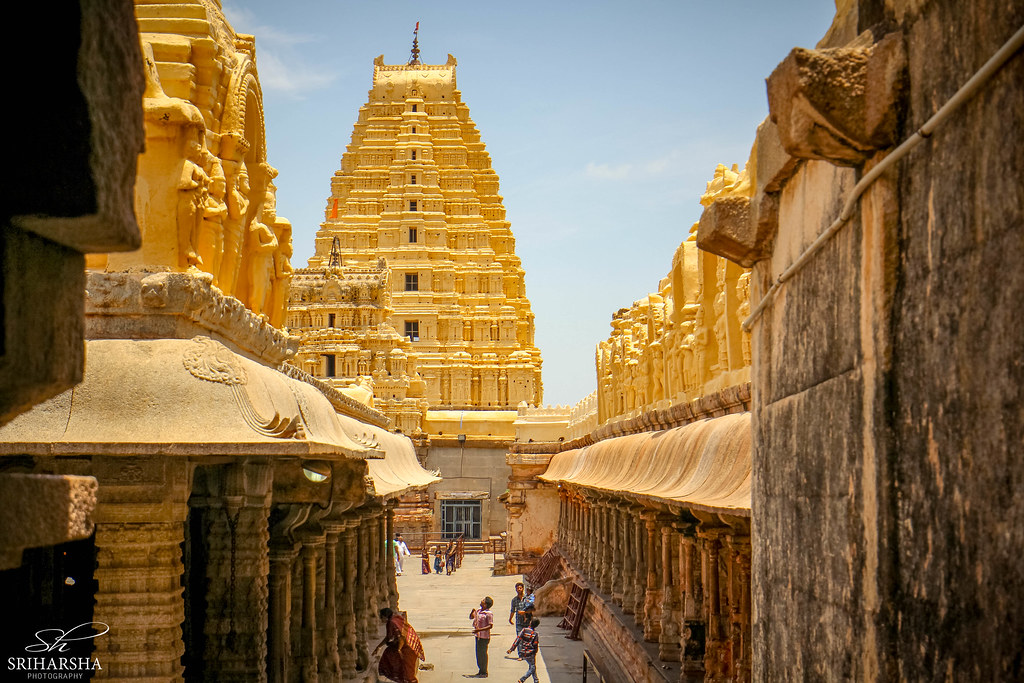
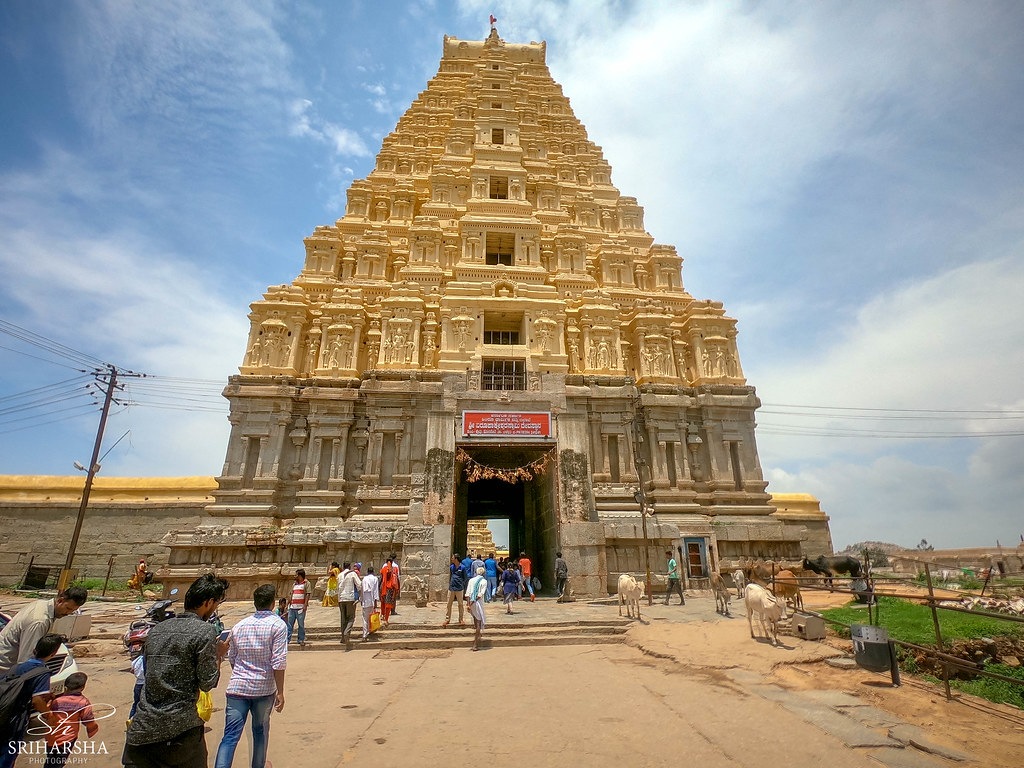
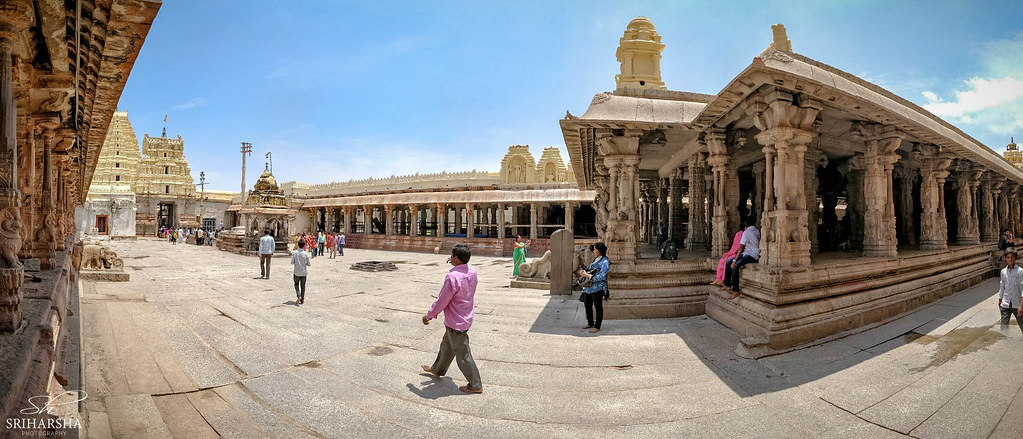
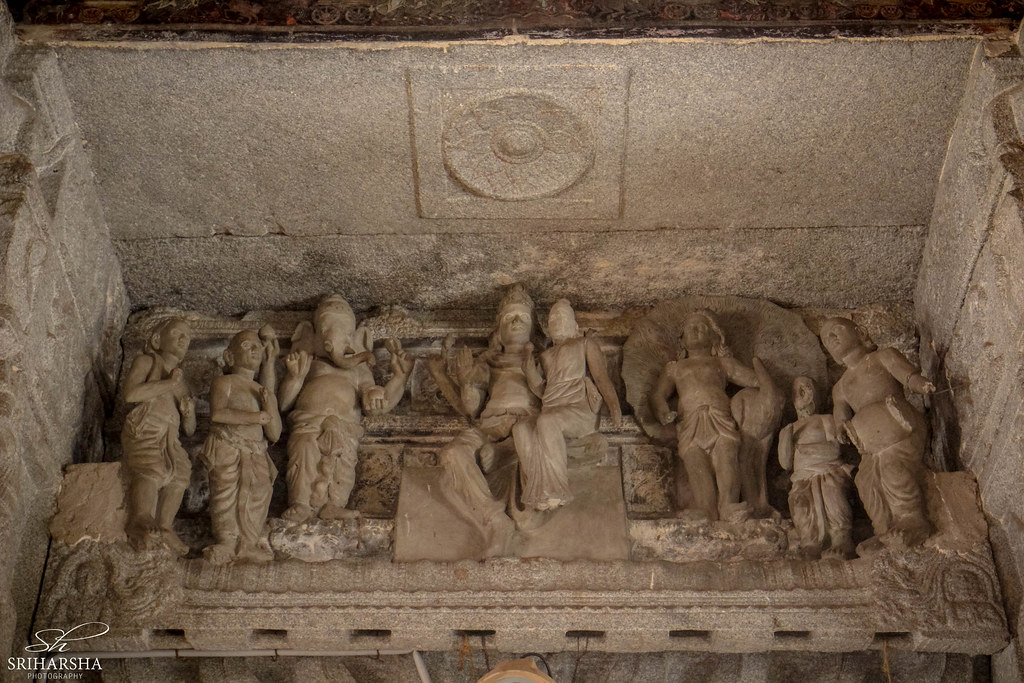

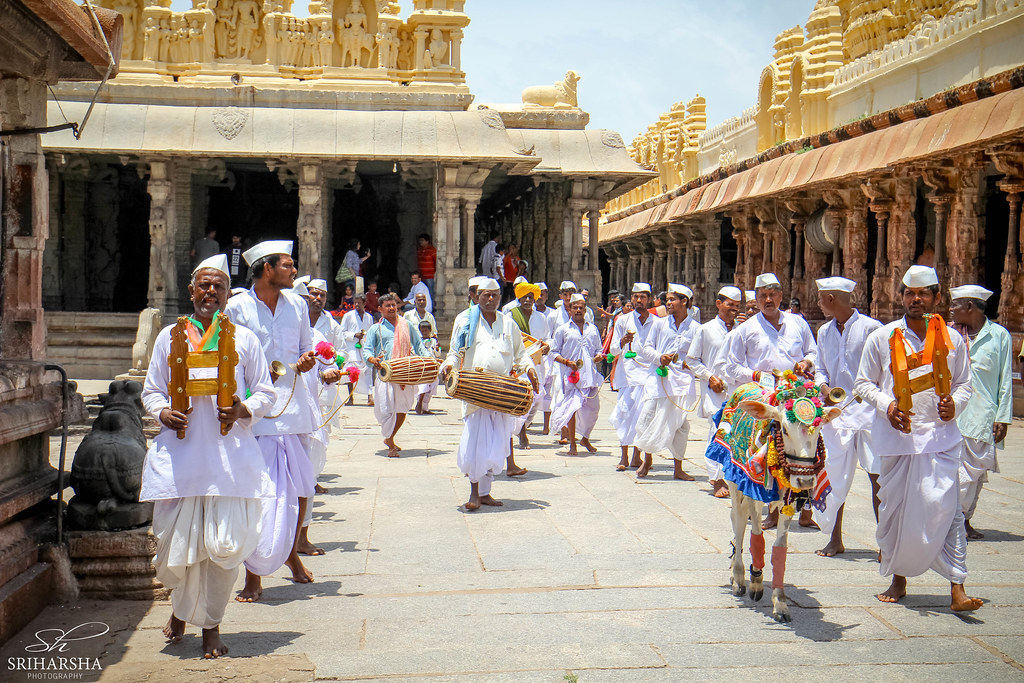
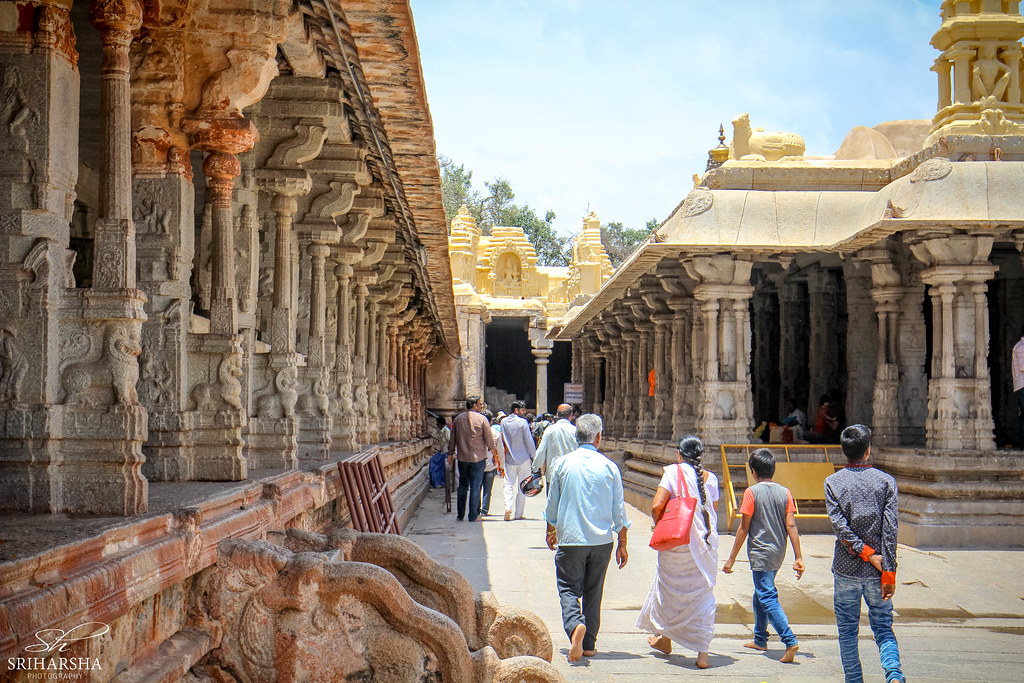
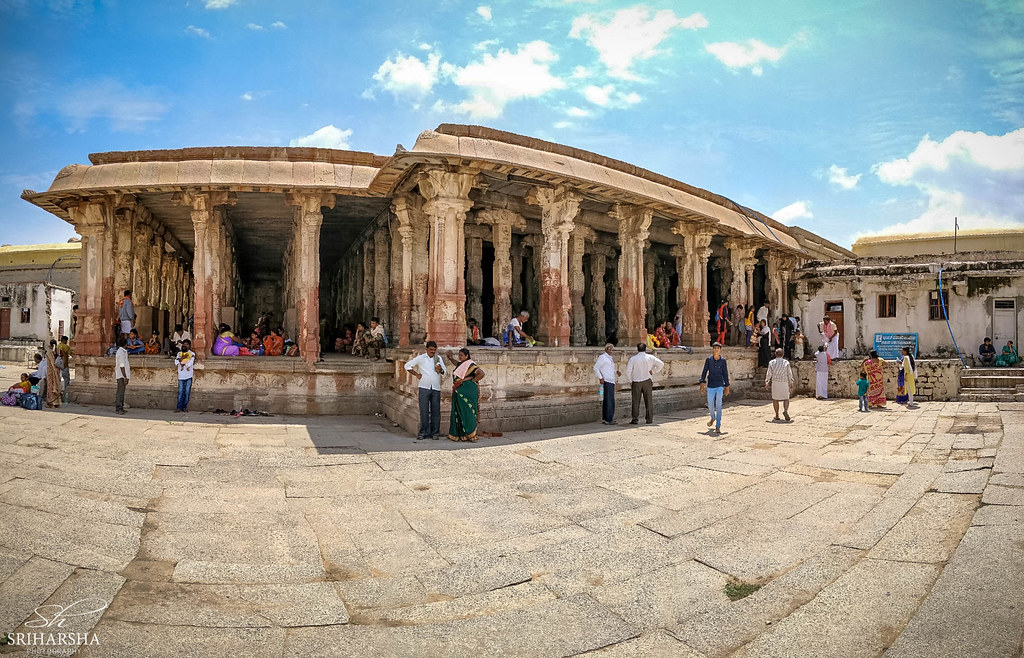


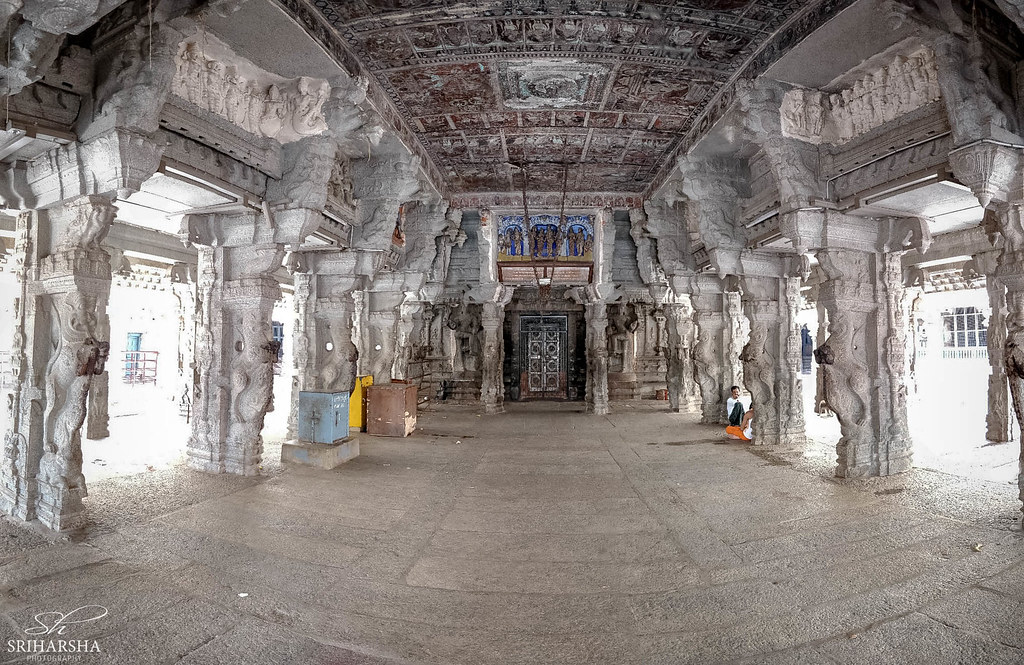
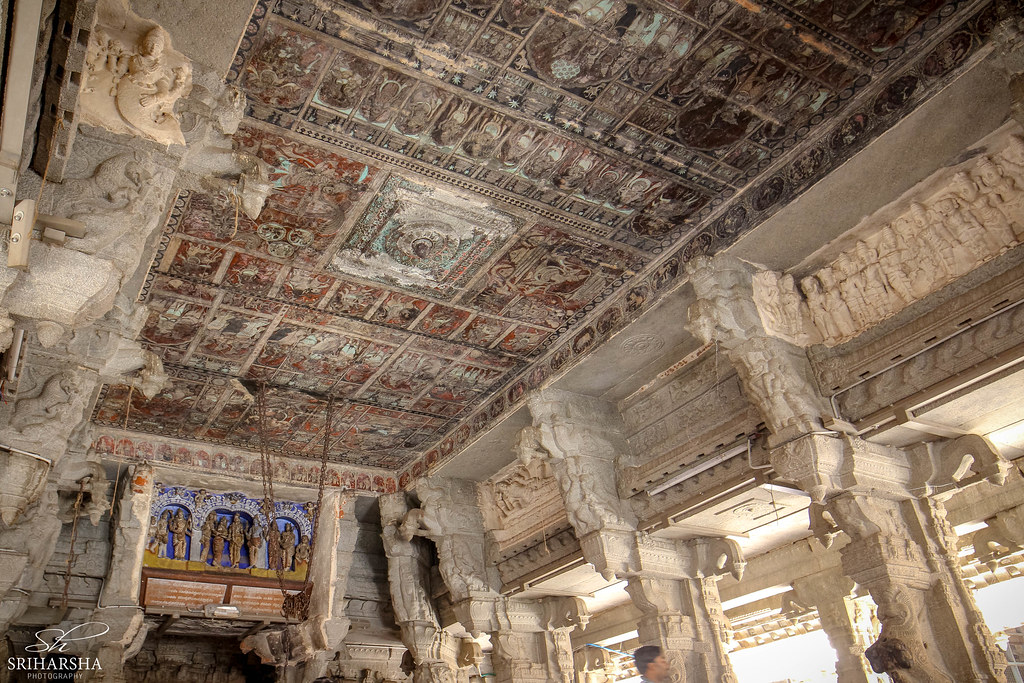
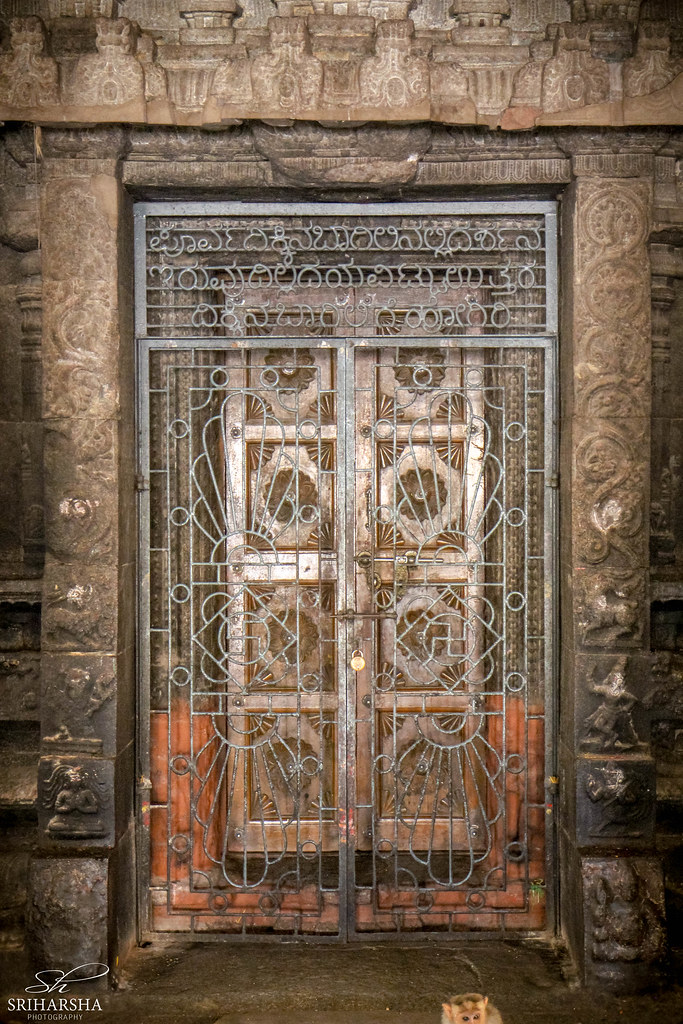
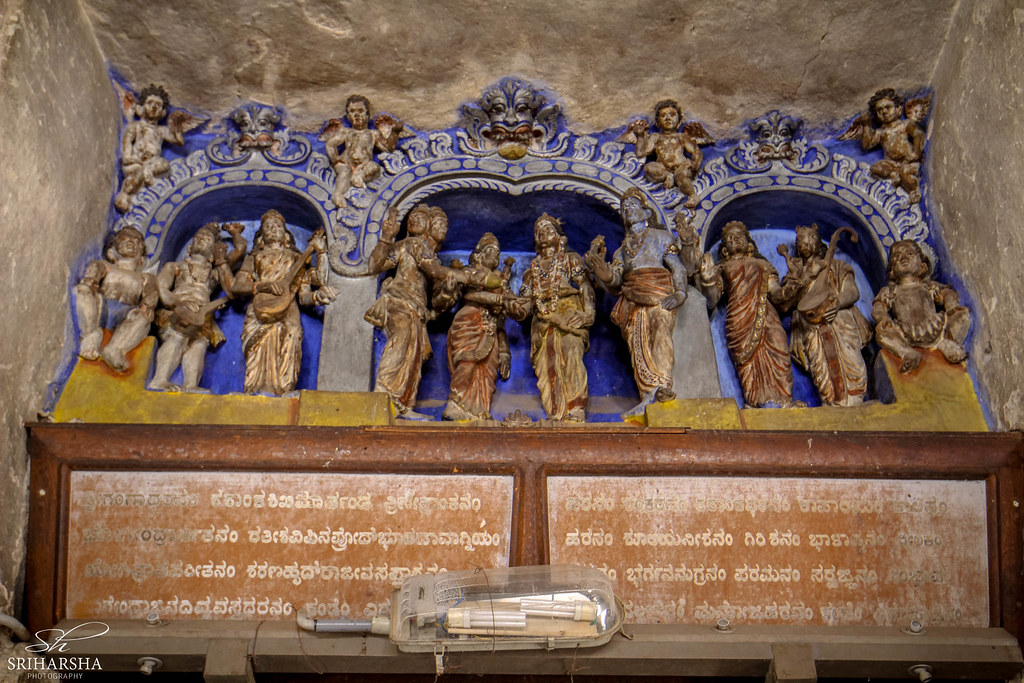
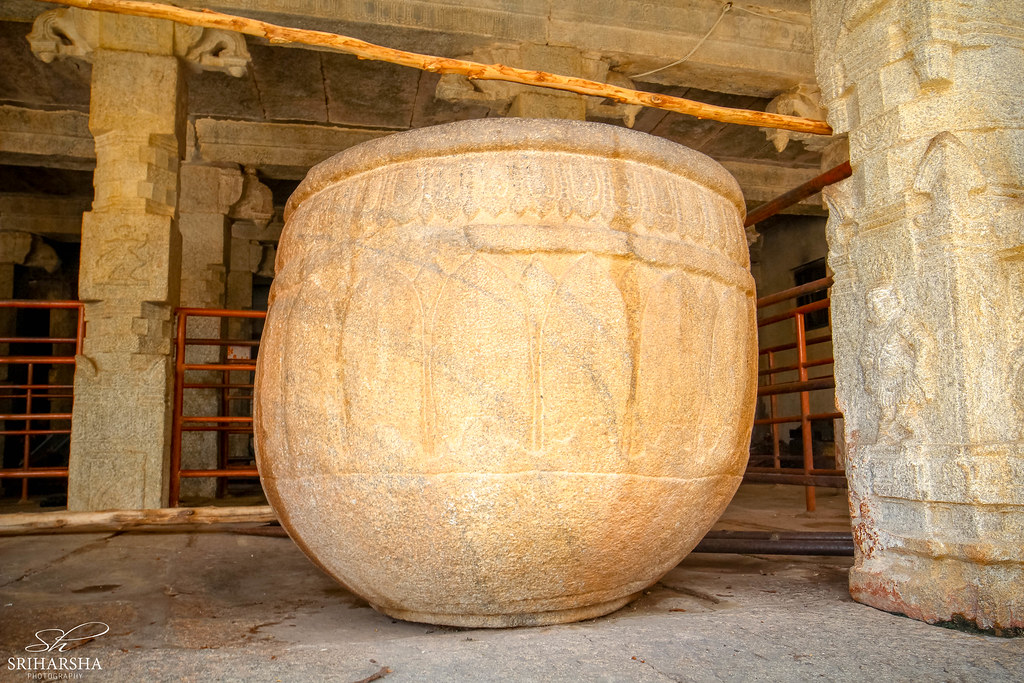
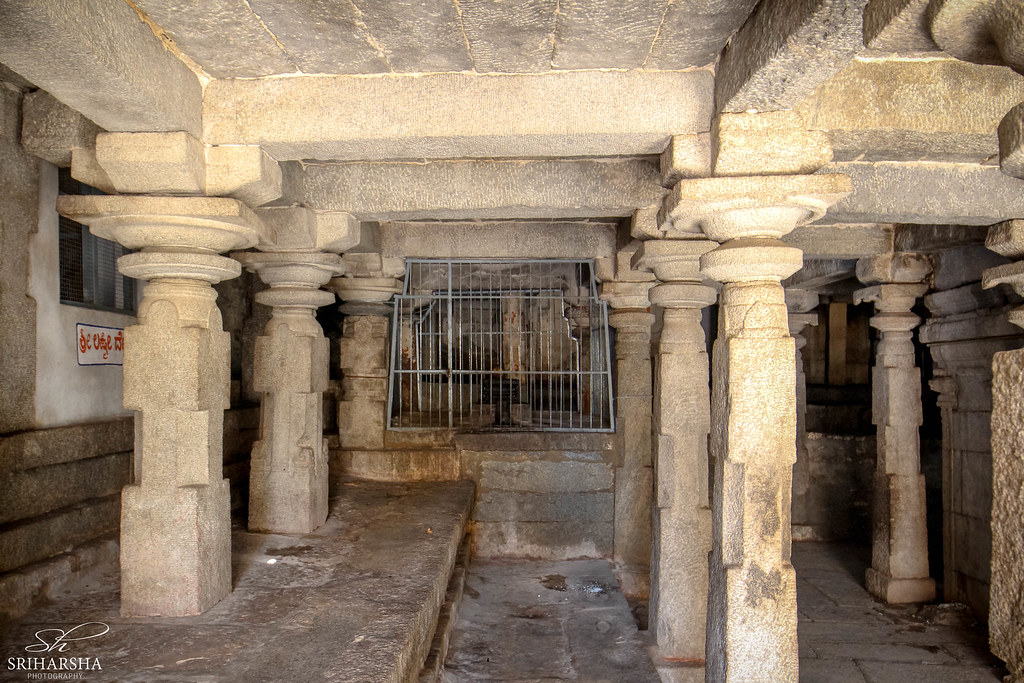
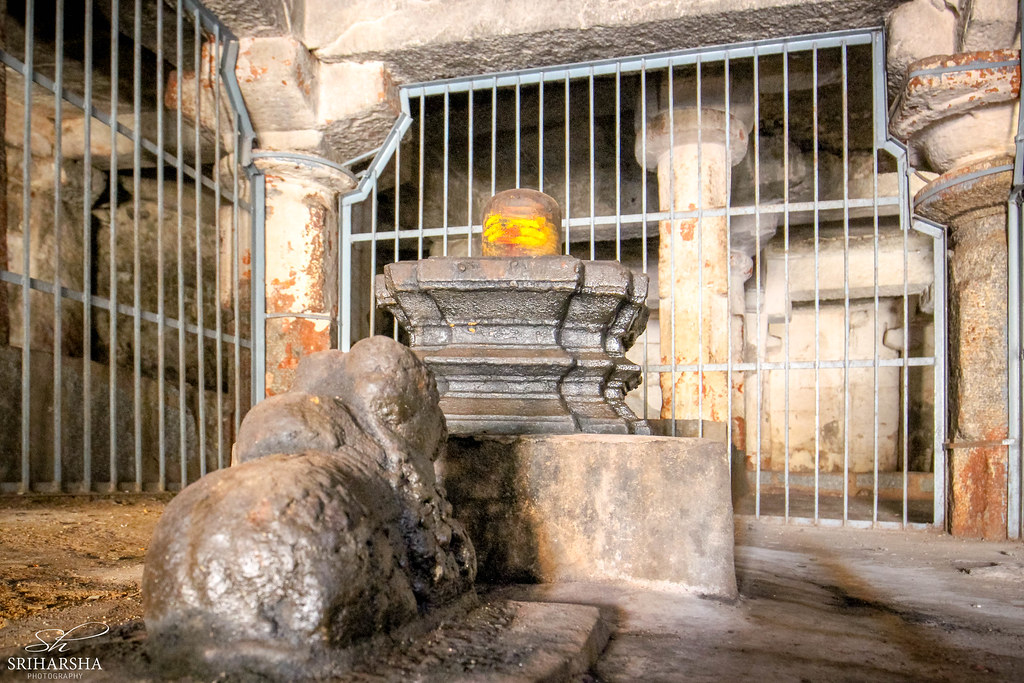
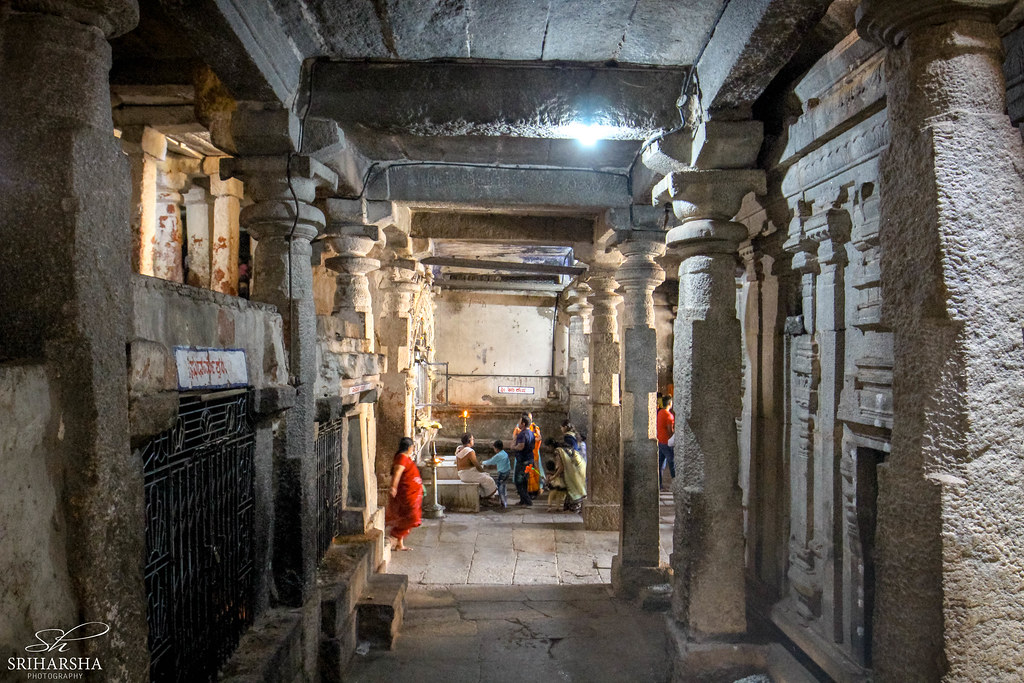
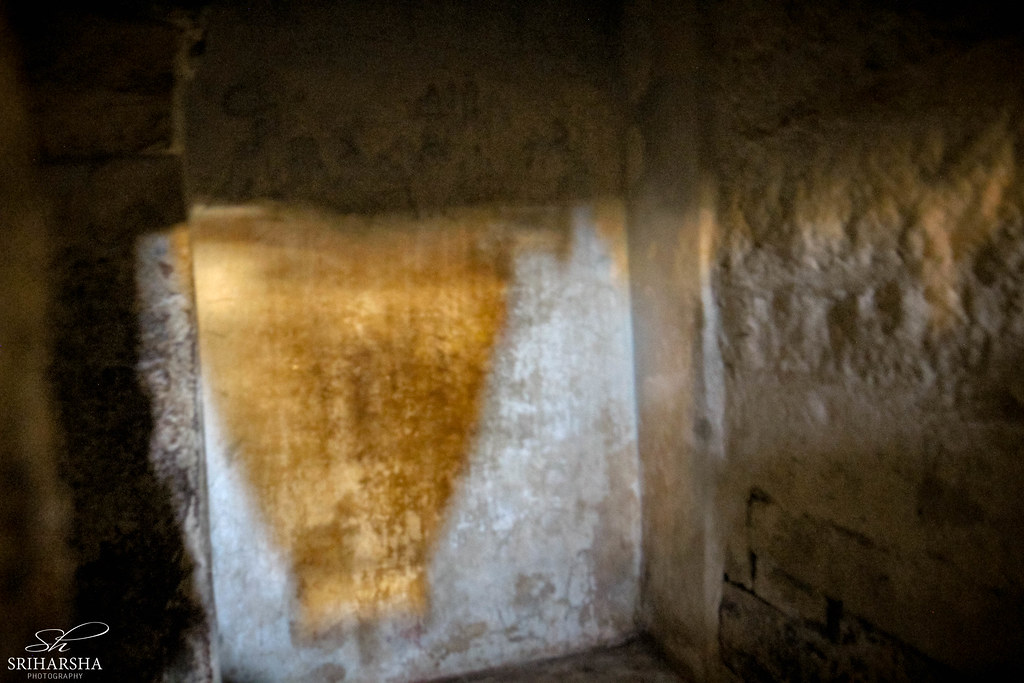
A good post on Hampi Virupaksha Temple
LikeLike
Thank you
LikeLike
Thank you
LikeLike